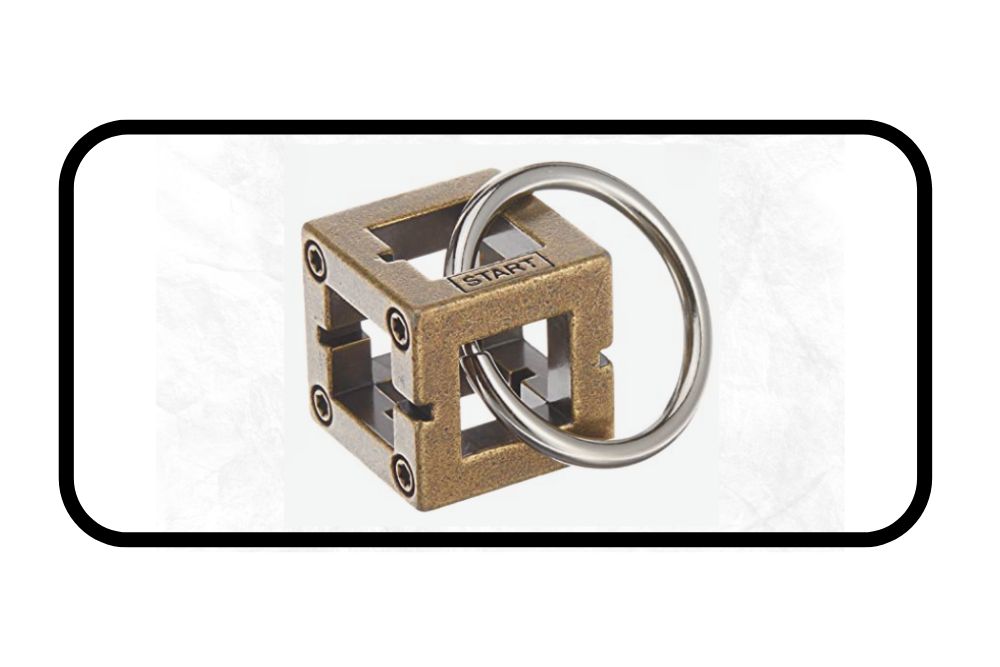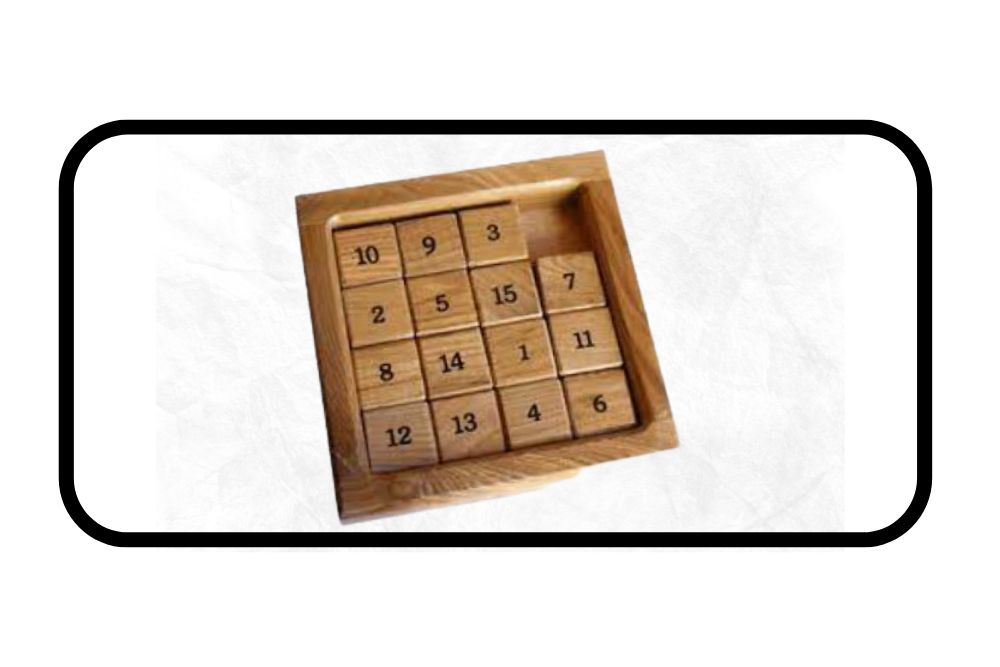For puzzle enthusiasts seeking a challenging and enjoyable way to spend their time, Hanayama puzzles are the perfect choice.
These intricately designed, high-quality, cast-metal puzzles provide hours of entertainment as they test the skills and patience of those who dare to untangle their secrets.
As a newcomer to the world of Hanayama puzzles, it’s essential to have a comprehensive guide that explains the basics, offers helpful tips, and outlines strategies for overcoming even the most formidable Hanayama challenges.
This article aims to provide such guidance, presenting an invaluable resource for both beginners and seasoned puzzle enthusiasts alike.
By the end of this ultimate guide, readers will have a solid understanding of the various levels of difficulty, expert techniques for approaching each unique puzzle, and the satisfaction of cracking these captivating enigmas.
Armed with this knowledge, anyone can confidently embark on their Hanayama puzzle journey and steadily progress towards becoming a master solver.
Understanding Hanayama Puzzles
Hanayama puzzles are a popular and challenging type of puzzle, known for their intricate designs and high-quality materials. They are often called “cast puzzles” due to the unique process of casting metal pieces to create the various components. This section will take a closer look at the different types of Hanayama puzzles, materials, and quality, as well as the difficulty levels.
Types of Hanayama Puzzles
There are various types of Hanayama puzzles that cater to different interests and preferences. Most of these puzzles are based on a cast metal design, but there are some variations:
- Cast Puzzles: The majority of Hanayama puzzles are cast puzzles made of metal pieces. These cast puzzles require the user to disassemble and reassemble pieces by understanding the specific mechanics of the puzzle.
- Plastic Puzzles: Although less common, Hanayama also produces plastic puzzles that offer a different tactile experience and often more colorful designs.
- Special Editions: Occasionally, limited edition and anniversary puzzles are released, often featuring unique designs or special materials.
Materials and Quality
One of the key factors that set Hanayama puzzles apart from others is the quality of materials used. These puzzles are crafted from sturdy and durable metals, such as zinc or brass, providing a solid weight and feel to the puzzle.
The pieces are also meticulously designed, with a smooth finish and precise dimensions that ensure a seamless experience.
In addition to the materials, Hanayama pays close attention to the overall aesthetic of its puzzles.
They feature intricate and artistic designs that not only serve as a fun challenge but also make them an attractive decoration for any puzzle enthusiast’s collection.
Difficulty Levels
Hanayama puzzles come in a range of difficulty levels, allowing individuals to find just the right challenge. These levels are typically numbered, starting from Level 1 (easiest) to Level 6 (hardest). Detailed information on difficulty levels can be found in the table below:
| Difficulty Level | Description |
|---|---|
| 1 – 2 | Beginner puzzles offer a gentle introduction to Hanayama puzzles, suitable for those new to these types of brain-teasers. |
| 3 – 4 | Intermediate puzzles provide a moderate challenge for those who have some experience with cast puzzles and are looking for a bit more difficulty. |
| 5 – 6 | Advanced puzzles are designed for seasoned puzzlers, with a high level of complexity and intricate mechanics that require advanced problem-solving skills. |
By understanding the different types, materials, and difficulty levels of Hanayama puzzles, one can make better decisions on which puzzles to tackle next and fully appreciate the quality and design that makes these puzzles a favorite among enthusiasts.
Getting Started with Hanayama Puzzles
Embarking on the journey of solving Hanayama puzzles can be both exciting and challenging. This guide will provide some basic techniques for getting started and developing crucial problem-solving skills needed to master these intriguing mechanical puzzles.

Basic Techniques
Before diving into a puzzle, it is essential to familiarize oneself with its various parts and mechanisms. Understanding the construction and movements of each piece is key to unlocking the puzzle’s logic. Here are some initial steps to follow:
- Examine each puzzle piece closely to identify any distinctive features or markings that may provide clues.
- Manipulate each piece to get a feel for how they fit together and move within the overall puzzle structure.
- Take note of any unusual or unexpected movements, as these can be hints guiding you toward the solution.
- Remember to be patient and take breaks when needed, as forcing a solution could lead to damaged pieces or increased frustration.
Developing Problem-Solving Skills
Once a solid understanding of the Hanayama puzzle’s basic mechanism has been achieved, it is time to begin honing one’s problem-solving skills. These are some helpful strategies for tackling these enigmatic puzzles:
- Break down the puzzle into smaller, more manageable portions. This can help provide a clearer perspective on the overall solution.
- Experiment with different problem-solving techniques such as trial and error, pattern recognition, or reverse engineering.
- Don’t be afraid to seek out resources or advice from fellow puzzle enthusiasts. Online forums and YouTube tutorials can offer invaluable guidance and insight.
- Practice consistently. The more time spent tackling Hanayama puzzles, the quicker and more efficient your problem-solving skills will become.
With the proper approach and a dedication to learning, anyone can develop the skills necessary to unlock the secrets of Hanayama puzzles. Embrace the challenge and enjoy the journey!
Mastering the Art of Hanayama Puzzles
Delving into the world of Hanayama puzzles can be both entertaining and challenging. With unique designs like the vortex, enigma, and quartet, these mechanical brain teasers offer hours of engaging fun. This section will cover advanced techniques, points of reference and memory to help you master the art of Hanayama puzzles.

Advanced Techniques
While each Hanayama puzzle has its own set of challenges, some advanced techniques can aid in solving most of them. These techniques include:
- Examining the internal threads and sliding pieces to better understand their interaction.
- Experimenting with twisting motions, as many puzzles involve a combination of sliding and twisting to move pieces.
- Focusing on areas where multiple components intersect, as these are often key to the puzzle’s progression.
From nutcase to marble, labyrinth to padlock, applying these advanced techniques can significantly improve your mechanical puzzle-solving skills.
Points of Reference
Utilizing reference points can be particularly helpful when tackling Hanayama puzzles. Noting where specific parts of a puzzle meet or overlap will help ascertain which actions to perform first, and in what order. For example, the infinity, delta, and ufo puzzles all benefit from establishing reference points to guide you through the solving process.
Iterations with reference points can also be used as a basis for developing strategies and narrowing down the potential steps that lead to the correct solution.
Memory
Memory plays a vital role in mastering Hanayama puzzles. Train your brain to remember the steps you have taken in solving a puzzle, so you can quickly revert to a previous state if necessary. By recalling earlier moves, you can avoid repeating errors and focus on new strategies to achieve the desired outcome.
Furthermore, consider taking breaks and returning to the puzzle later. This often provides fresh perspectives and can assist in making connections between different parts of the structure.
The importance of memory cannot be underestimated when trying to conquer the twists, turns, and manipulations that are inherent in Hanayama brain teasers.
By practicing these techniques and harnessing your memory, you will foster critical thinking skills while revealing the secrets of these fascinating puzzles.
Popular Hanayama Puzzle Challenges
For puzzle enthusiasts, Hanayama puzzles offer a delightful combination of fun and frustration. These intriguing challenges are crafted using high-quality metal materials and boast unique shapes, providing hours of entertainment for even the most ardent puzzle-solving aficionados.
Some of the most popular Hanayama puzzles, enjoyed by both beginners and seasoned puzzle solvers, include the following:
- King – With its regal name and majestic design, the King puzzle engages and challenges with an intricate set of interlocking, metal pieces.
- Fun – As the name suggests, this puzzle offers a lighthearted and enjoyable challenge while providing a sense of accomplishment upon completion.
- Enthusiasts’ Choice – Specially designed for those with a passion for tackling complex challenges, this puzzle provides an advanced puzzle-solving experience that both excites and tests the limits of its solver.
Key Takeaways
In the ultimate guide for solving a Hanayama puzzle, readers can keep these key points in mind on their journey to mastering these intricate brain teasers:
1. Understanding the complexity level of the puzzle is crucial, as Hanayama puzzles are rated on a scale of 1 to 6, with 6 being the most difficult. This helps set realistic expectations and can also give insights into the level of challenge involved.
2. Patience is essential when working with Hanayama puzzles. They are designed to test one’s problem-solving skills and may take a considerable amount of time to solve. Rushing may lead to frustration.
3. Analyzing the puzzle’s pieces and structure can give clues on where to start and what moves to make. It’s important to observe any distinguishing features, such as grooves or markings, as these may provide hints for the solution.
4. Don’t be afraid to use online resources if feeling stuck. Many Hanayama enthusiasts have shared their solutions and tricks on forums, websites, and videos. These can be useful for learning new techniques and for getting unstuck when needed.
5. Remember that practice makes perfect. As one’s experience with Hanayama puzzles grows, so does their ability to identify patterns and strategies for solving them more efficiently.
It is important to note that, while some of these puzzles may initially result in frustration, perseverance and patience are key. The satisfaction that comes from conquering these complex challenges makes it well worth the effort.
We have highlighted just a few of the many popular Hanayama puzzles available. There is something for everyone – from shapes and designs that intrigue beginners to advanced challenges for those seeking to push their puzzle-solving skills to new heights.
With these key takeaways in mind, enthusiasts of Hanayama puzzles can confidently embark on their path to conquering these challenging and engaging brain teasers.




